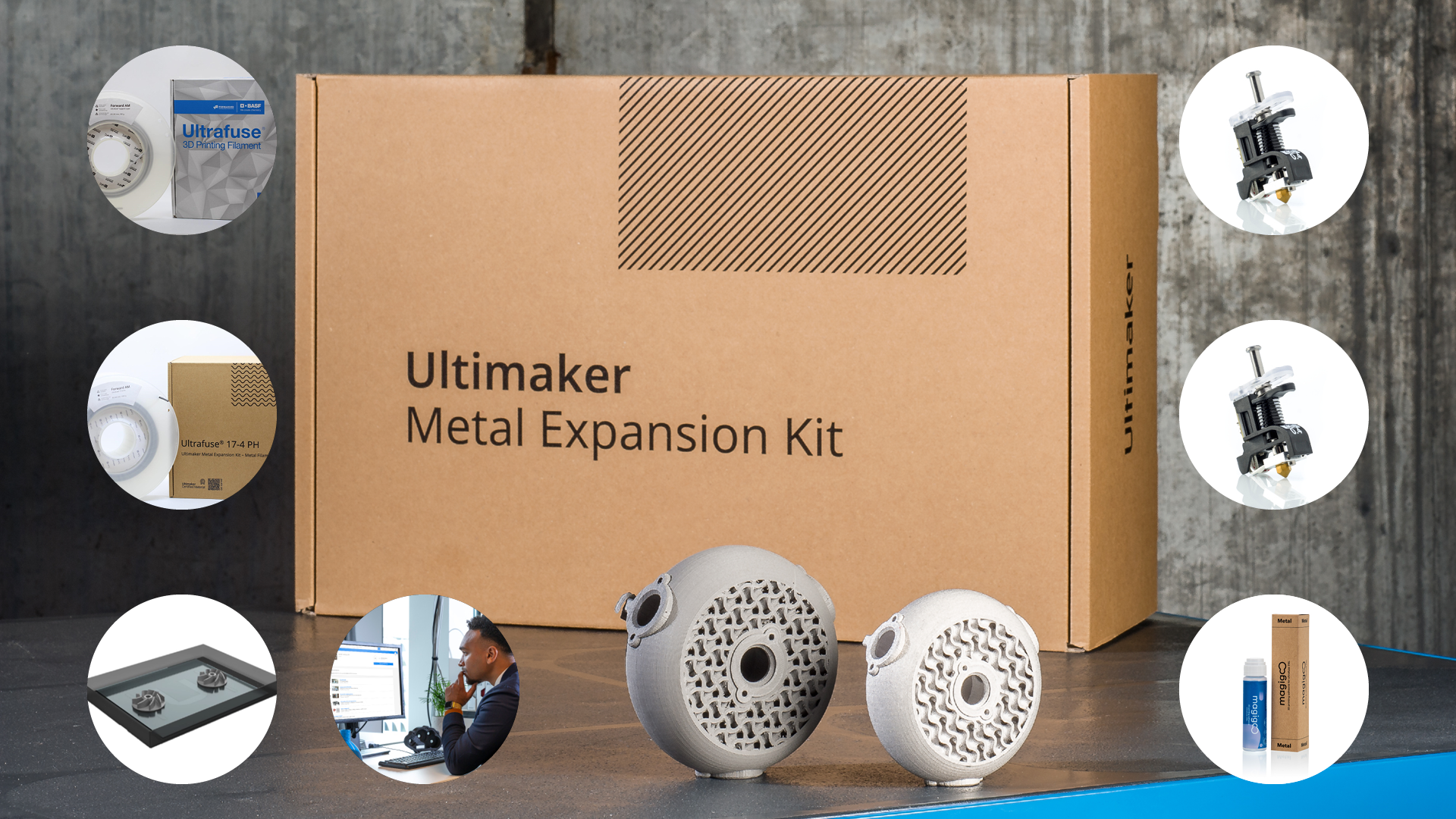Ultimaker, the Dutch desktop 3D printer powerhouse, has announced the release of a metal expansion kit for its S5 platform. The S5 is Ultimaker’s largest-scale 3D printing platform, and is used by Ford and Volkswagen, among other giant corporate customers.

In a press release, Ultimaker’s product manager Andrea Gasperini said, “The Ultimaker Metal Expansion Kit is especially suitable for printing non-off-the-shelf parts such as tools, jigs and fixtures, replacement parts, functional prototypes and auxiliary components. The Kit provides access to a complete and validated 3D printing workflow on open platform that offers competitive quality and lead times normally only accessible with full in-house metal fused filament fabrication (MFFF) solutions at a much higher total cost of ownership.”

Gasperini also noted that the limited number of customers that have already started using the kit are “realizing return-on-investment (ROI) in less than a year.” Clearly, then, the financial considerations, alongside Ultimaker’s dominance of the FFF desktop market, should help introduce metal additive manufacturing (AM) to a much wider audience.
Probably not coincidentally, this comes shortly after two significant Ultimaker developments: the company’s purchase of MakerBot, and the latest update (version 5.0) to its Cura software. The latter facilitates much greater user control by allowing for prints with variable line widths in the same object.
As for the acquisition of MakerBot, a little over a year ago (and about a year before it was purchased by Ultimaker), the company came out with a metal expansion platform for its METHOD system. Especially given that Ultimaker, like MakerBot, uses BASF filament, it seems likely that the metal expansion kit was one of the primary interests Ultimaker had in the acquisition.

In addition to the hardware components, including print cores and a print bed, the metal expansion kid provides entry into multiple online support services for the platform. And, as was the case with the MakerBot bundle, customers are given access to the BASF Debinding and Sintering Order Management Portal. Once the parts are printed, customers send them into a local participating service bureau for post-processing, after which the finished product is sent back.
If the much lower price point, when compared to purchasing entire additional platforms, does indeed lead to wider adoption of metal AM, that could be a catalyst for increased adoption of using AM for repairs. The ability to change line widths would also facilitate this, owing again to its enhancement of user control, accentuating the principal advantage of AM technologies: the ability to create geometries otherwise unachievable. This is particularly helpful in creating one-off parts (or even parts of parts) specifically designed to achieve unique repairs.
Finally, although the process of sending the print in for post-processing is obviously less convenient than being able to do one’s own post-processing, it’s also a large part of what makes the cost of entry so much lower. Moreover, with increased adoption, sintering service bureaus would become logical hubs for burgeoning AM-centered supply chains.
Images courtesy of Ultimaker
Subscribe to Our Email Newsletter
Stay up-to-date on all the latest news from the 3D printing industry and receive information and offers from third party vendors.
You May Also Like
3D Printing News Briefs, April 27, 2024: Research, Digital Dentistry, Cycling, & More
We’re starting today’s 3D Printing News Briefs with some research into 3D printed luminescent quantum-dot polymer architectures and free-form laser beam shaping, and then on to an open source 4-axis...
HP & INDO-MIM Collaborate to Boost Metal 3D Printing in India
HP Inc. and INDO-MIM, a US- and India-based supplier of metal injection molding (MIM) powders and contract manufacturer, have announced that the two companies will collaborate to accelerate additive manufacturing...
3D Printing News Briefs, February 17, 2024: Shot Blasting, Service Bureaus, & More
In today’s 3D Printing News Briefs, we’re starting out with post-processing, as SKZ Würzburg is using a shot blast system from AM Solutions for its research. Moving on to business,...
3D Printing News Unpeeled: Not That Kind of Organ 3D Printing
GKN Aerospace will create a 150 jobs in Trollhattan Sweden with an investment of $60 million part of which comes from the Swedish Energy Agency’s Industriklivet initiative. The investment will...






























